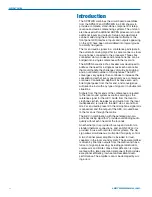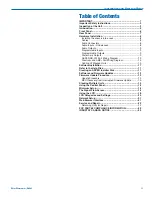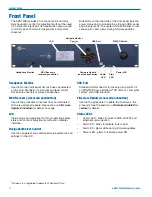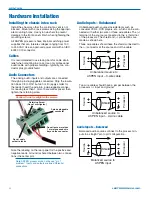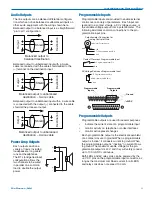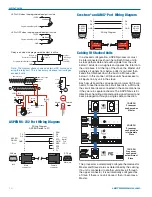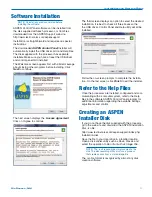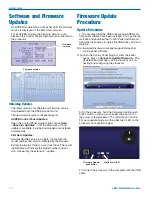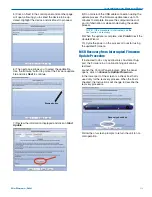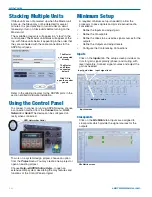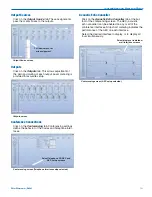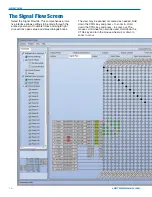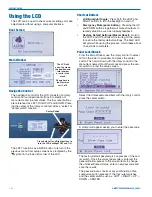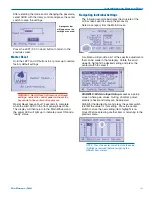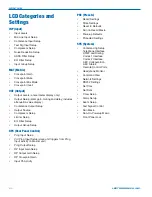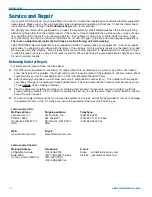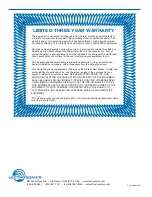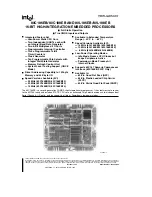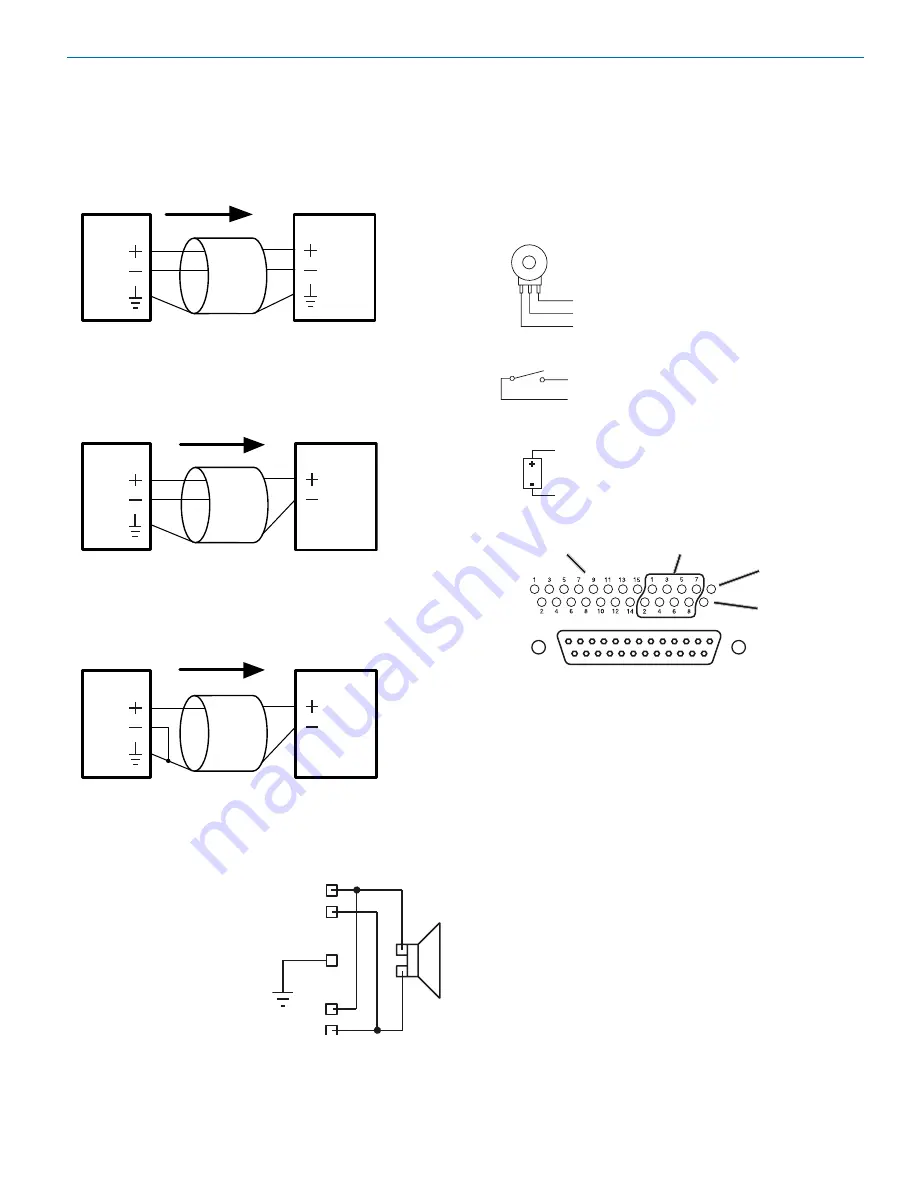
Installation and Startup Guide
Rio Rancho, NM
9
Programmable Inputs
Programmable inputs are provided to enable external
control over a variety of parameters. Each input can
respond to a contact closure, a DC voltage source, or
the variable voltage output from a potentiometer. The
following illustrates common connections to the pro-
grammable input pins.
10K Linear Potentiometer
CCW
CW
+5V
To Programmable Input Pin
Gnd
Contact Closure as Programmable Input
To Programmable Input Pin
Gnd
DC Voltage Source as Programmable Input
To Programmable Input Pin
0VDC (Off) to +5VDC (On)
Gnd
Potentiometer Connection for
Analog Control of Gain
Programmable
Inputs
Programmable
Outputs
Ground
+5VDC
Programmable Outputs
Programmable outputs are used for several purposes:
•
indicate the current state of a programmable input
•
monitor activity on telephone or codec interfaces
•
monitor active preset changes
Each programmable output is the electrical equivalent
of a contact closure to ground. When a programmable
output is “active,” it conducts current to ground. When
the programmable output is “inactive,” no current flows
to ground. The maximum usable voltage for the pro-
grammable outputs is 40 V and they will safely conduct
up to 100 mA DC continuous.
Both LEDs and 5V relay coils can be powered by the
+5 V DC pins on the programmable input connector, as
long as the maximum combined current for all LEDS
and relay coils does not exceed 100 mA.
Audio Outputs
The line outputs are a balanced differential configura-
tion which can drive balanced or unbalanced inputs on
other audio equipment with the wiring shown here.
Balanced output to a balanced input is a straightforward
“pin to pin” configuration.
Destination
Output
Balanced output to
balanced destination
Shield
Balanced output to unbalanced input with a 3-wire
cable is connected with the cable shield added to the
(–) terminal on the destination input.
Destination
Output
Balanced output to unbalanced
destination – 3-wire cable
Shield
Balanced output to unbalanced input with a 2-wire cable
is connected with the output (–) connected to the cable
shield at the processor output.
Destination
Balanced output to unbalanced
destination – 2-wire cable
Output
Shield
Power Amp Outputs
Each output can drive a
variety of loads, including
loudspeakers, long cable
runs and headphones.
The BTL (bridge tied load)
configuration allows the
two channels to be wired
in parallel on a common
load to double the output
power.
+
-
+
-
Summary of Contents for SPNTWB
Page 2: ...SPNTWB LECTROSONICS INC 2...




